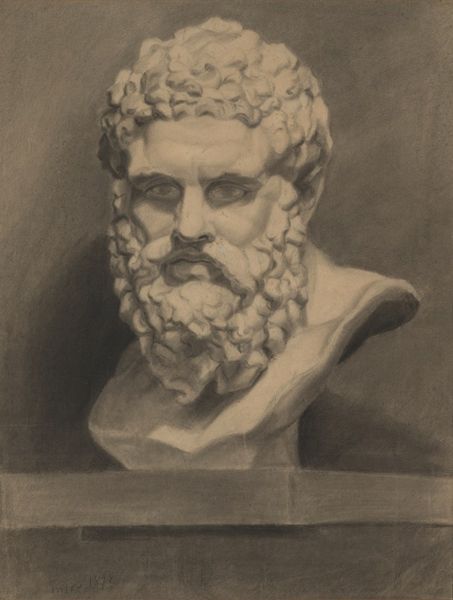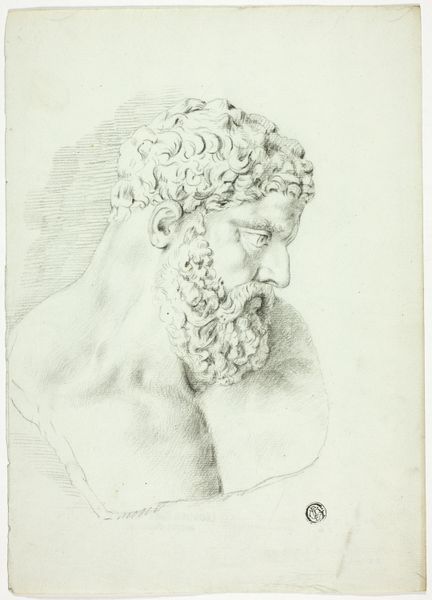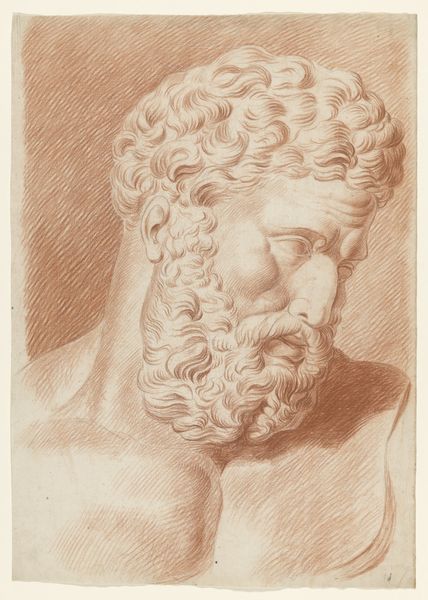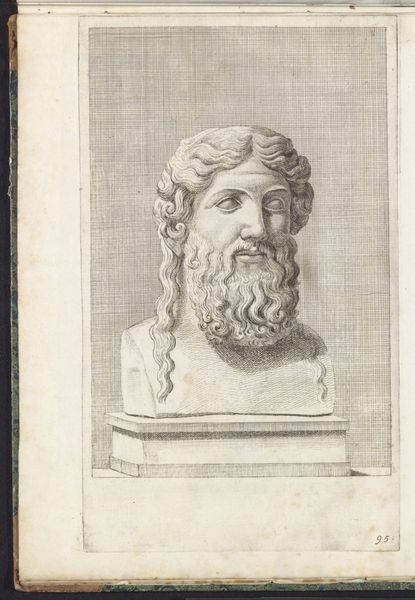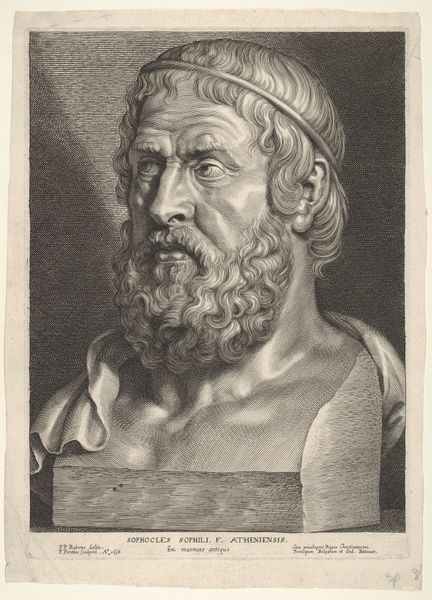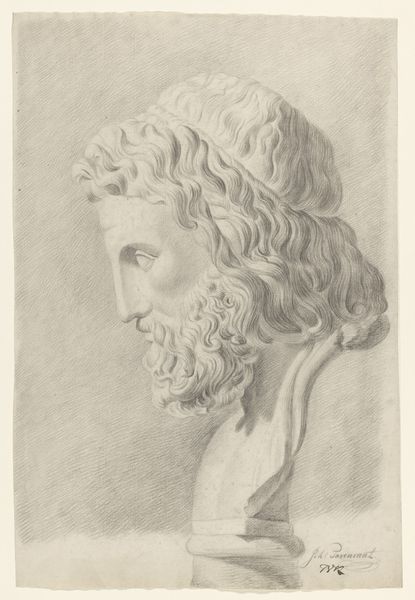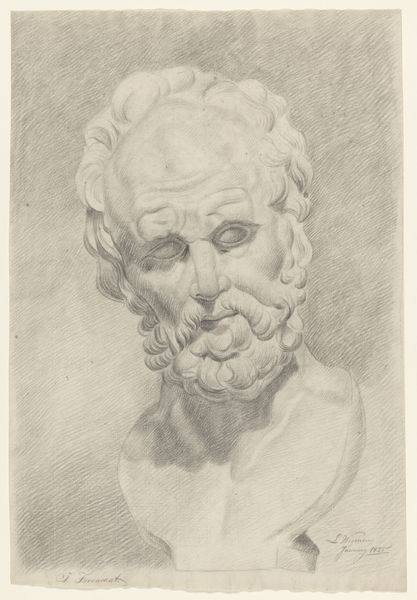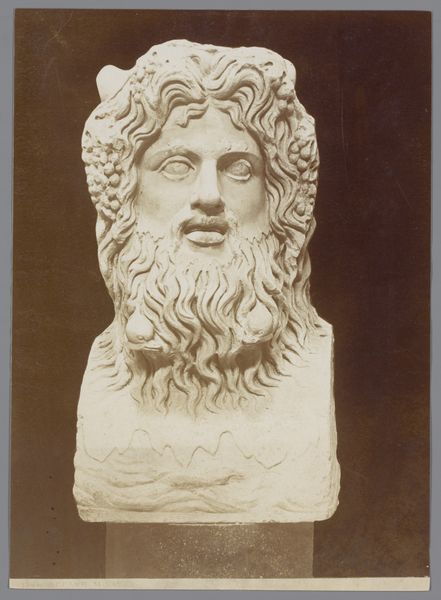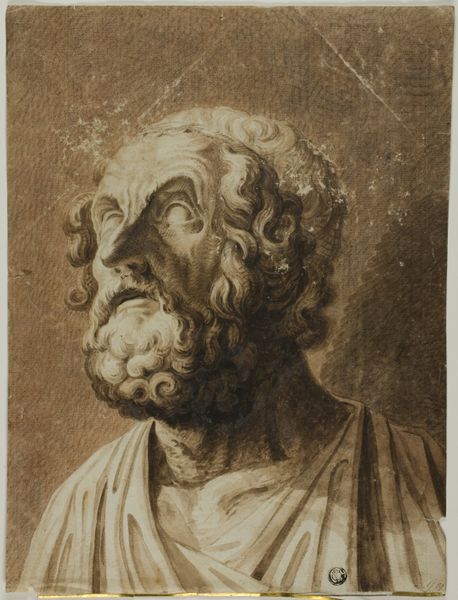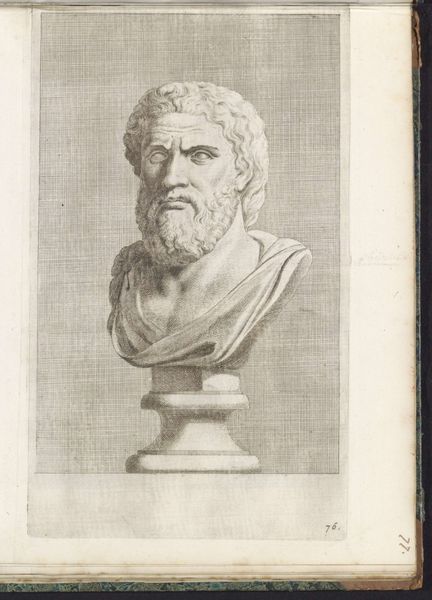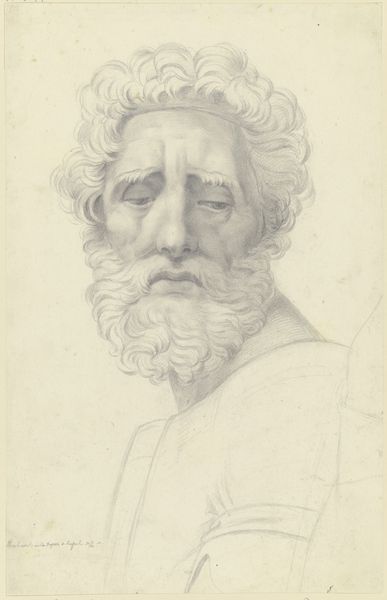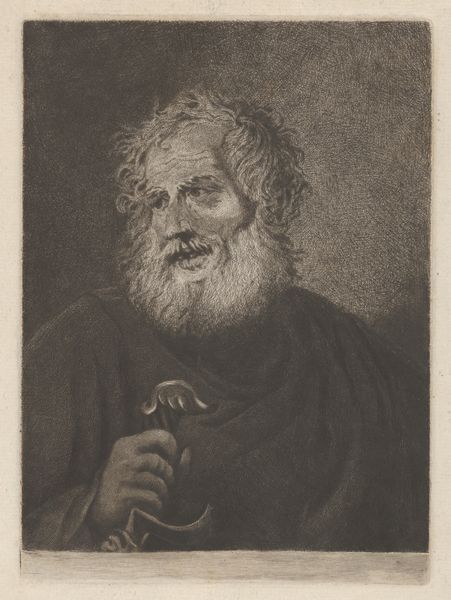
drawing, pencil, graphite
#
portrait
#
drawing
#
neoclassicism
#
charcoal drawing
#
charcoal art
#
pencil drawing
#
pencil
#
limited contrast and shading
#
graphite
#
history-painting
#
academic-art
Dimensions: height 530 mm, width 367 mm
Copyright: Rijks Museum: Open Domain
Johannes Tavenraat made this pencil drawing of a plaster cast of a bearded man in 1826. This work reflects the intense focus on classical art within European academies of the time. Here, the artist wasn't drawing from life, but from a copy of a classical sculpture. It was believed that copying such works instilled good taste and a sense of proportion. But what were the social implications of this institutional practice? By promoting classical aesthetics, academies implicitly established a canon of beauty linked to a specific historical moment and culture. This canon often favored European features, thus creating a hierarchy where other cultures were seen as less refined. To fully understand this drawing, we need to look at the curriculum of the art academy. Archival research into the structure of academic training and the writings of art theorists of the time are invaluable tools. By doing so, we can understand the power dynamics embedded in artistic training and their lasting effects on the art world.
Comments
No comments
Be the first to comment and join the conversation on the ultimate creative platform.

